Return of the Goatsucker
The story of one of our most enigmatic birds or the title of a horror sequel? Read on to find out which it is…
Despite the recent cold weather, April has been a very exciting time for anyone who loves the natural world. At the same time as being allowed to travel again, returning migrant birds have brought diversity and joy to our landscape and my life. Morning birdsong has made me feel more alive and the brilliant colour of birds such as Redstarts and Pied Flycatchers flashing through the trees in oak woodlands has been a glorious sight.
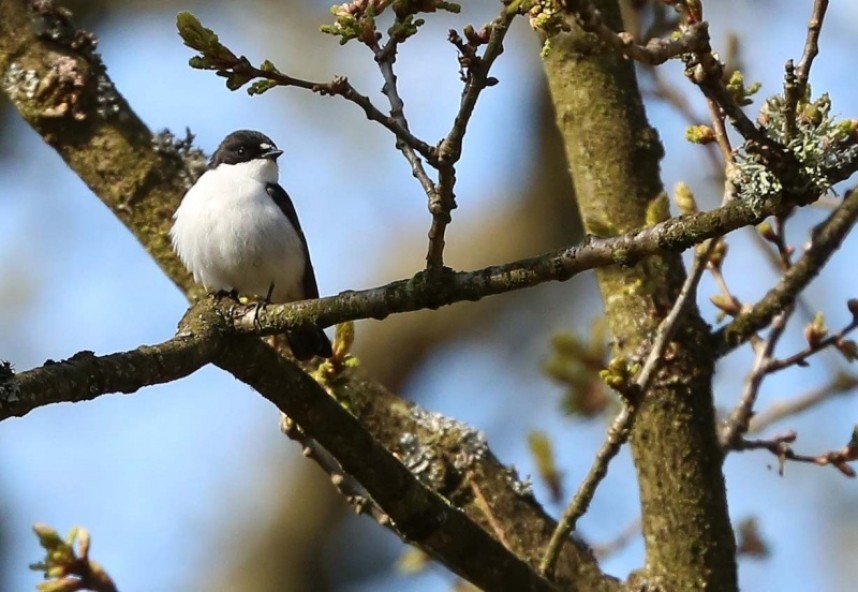
Pied Flycatcher © Richard Baines
May promises more African arrivals as the weather becomes warmer... In a few short weeks we will welcome back one of our most mysterious birds, the European Nightjar. Their journey has been long and hard; thousands of miles from their wintering sites in the southern region of the Democratic Republic of Congo. They will leave the rich habitat mosaics of savannah, scrub and tropical forest of Africa and arrive to nest in the mixed, semi-natural and commercial forests of the North York Moors National Park.
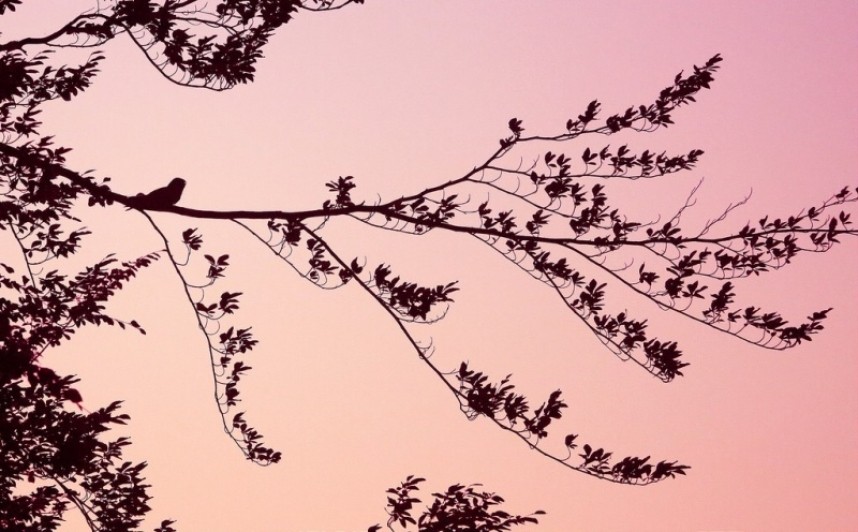
European Nightjar © Dan Lombard
Typical Nightjar habitat in Britain is dry lowland heath with scattered low trees, scrubby woods, forest edges and clear-fell. The birds roost by day, perching horizontally along a low branch on a tree or on the ground, their cryptic markings blending in with tree bark, earth and leaf-litter.
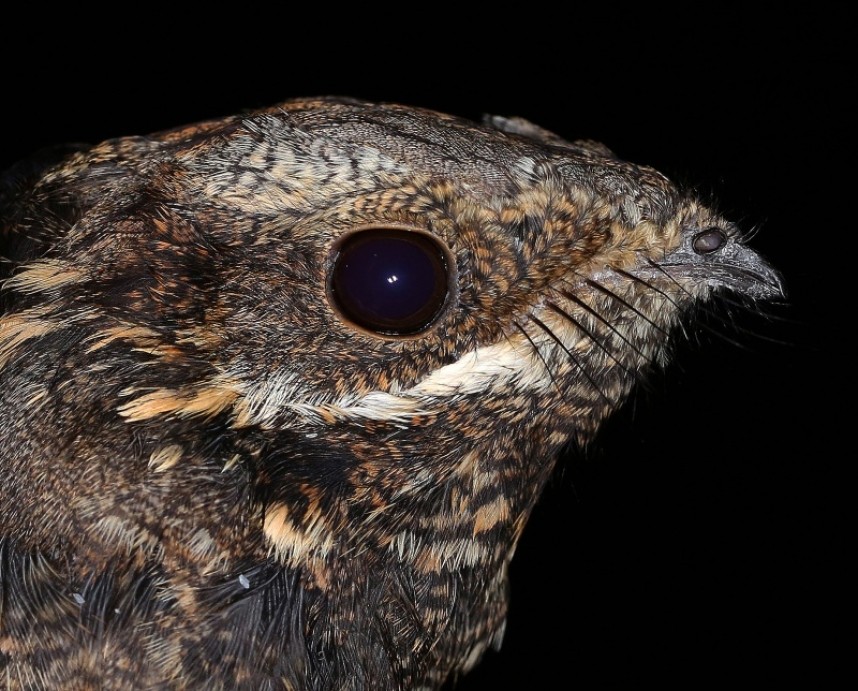
European Nightjar © Dan Lombard
They are both crepuscular and nocturnal becoming active at dusk when the males fly between various perches uttering many strange calls including their eerie ‘churr’ call. This song, which has a ventriloquist quality, can continue for up to ten minutes and has been likened to the purr of a sewing machine (or in earlier days, a spinning wheel), mostly at the same pitch but occasionally falling before rising again.
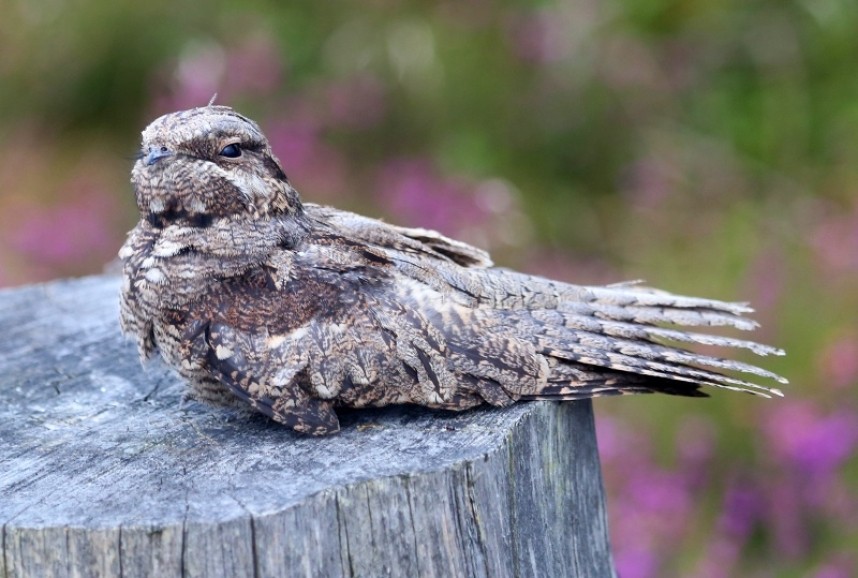
European Nightjar © Dan Lombard
Displaying males glide in ‘butterfly flight’ with wings up in a V-shape, clap their wings and fan their tails to show the white spots on their outer primaries and outer tail feathers. They can sometimes be brought closer to an observer by the flap of a white handkerchief, which they may take to be another male displaying in their territory. Females and young males lack these white markings. No nest is made and the eggs (usually two, and mottled for camouflage) are laid on the ground and the young birds are fed by both parents.
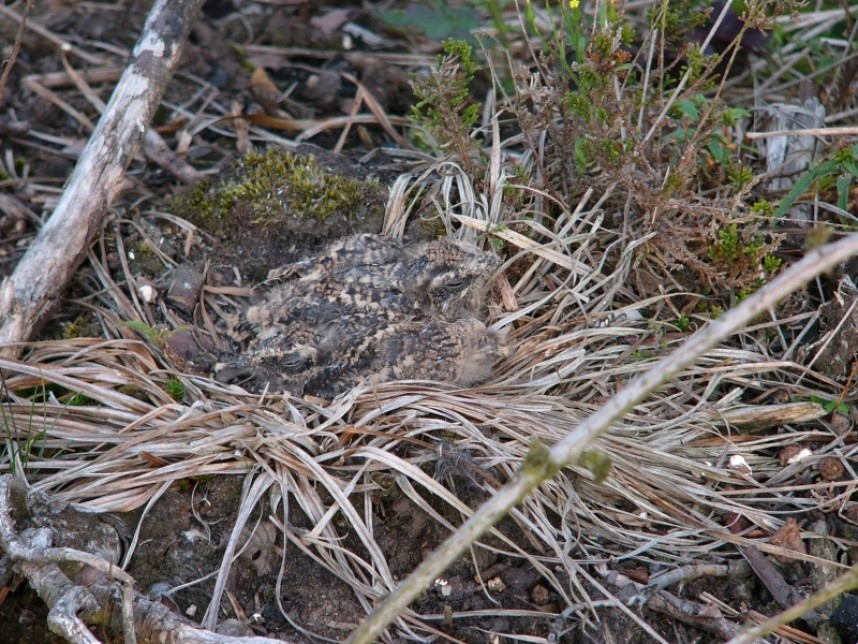
European Nightjar chick © Richard Baines
Like many other night birds, negative and sometimes sinister folklore has grown up around them. In Yorkshire they were believed to be the wandering spirits of children who died unbaptised. The Latin name Caprimulgus translates as ‘Goat-sucker’, reflecting a belief from the days when people grazed their goats and sheep on commons that the birds, with their wide gapes, were capable of suckling milk from the animals – and infecting them with disease at the same time. In fact, Nightjars were simply intent on catching the insects which were associating with these animals. Their gaping mouths, equipped with bristle-like hairs, can be seen in this wonderful photo taken by Wold Ecology Senior Ecologist Dan Lombard.
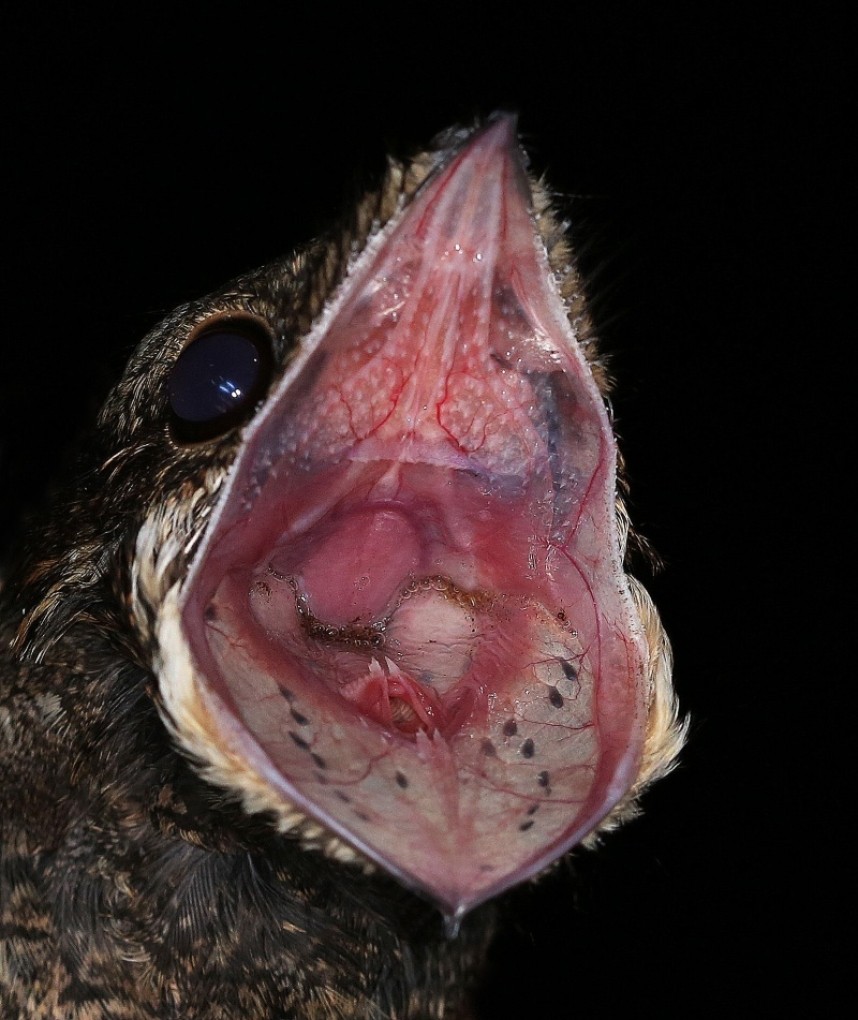
European Nightjar © Dan Lombard
To experince these birds first hand why not join one of our special Nightjar Safaris starting on the 28th May. For more details Click Here
Richard Baines
Yorkshire Coast Nature



 Back to Blog
Back to Blog
